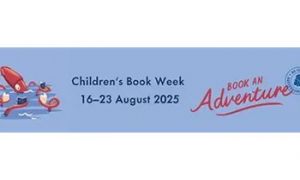The following lists the sub-outcomes, examples of evidence when children achieve each sub-outcome and how educators can promote and help children to achieve MTOP Learning Outcome 5 - Children And Young People Are Effective Communicators V2.0.
In school-age care settings, children build individual capabilities as well as community connections. Children use their communication skills particularly as listeners and speakers to engage in relationships with others. Play in all its dimensions provides children with opportunities for communication.
Learning Outcome 5 - Children And Young People Are Effective Communicators V2.0
Children and young people interact verbally and non-verbally with others for a range of purposes
This is evident when children and young people, for example:
- engage in enjoyable interactions using verbal and non-verbal language
- convey and construct messages with purpose and confidence, building on home/family and community literacies
- use language and representations from play, music, art and popular culture to share and project meaning
- contribute their ideas and experiences in play, small and large group discussions, including decision-making opportunities such as making group rules
- are independent communicators who initiate Standard Australian English and home language conversations and demonstrate the ability to meet the listeners’ needs
- interact with others to explore ideas and concepts, clarify and challenge thinking, debate, negotiate and share new understandings
- convey and construct messages with purpose and confidence, e.g. expressing needs, conflict resolution, following directions
- express ideas and feelings and understand and respect the perspectives of others
- use verbal and non-verbal language to communicate thinking
- participate in play opportunities that promote social interaction with peers
- participate in opportunities to identify Aboriginal and Torres Strait Islander signs, symbols and images as part of their verbal and non-verbal communication with families and communities
- share Aboriginal and Torres Strait Islander verbal ways of storytelling and yarning and non-verbal ways of deep listening
- use digital technologies to express their thinking and ideas.
Educators promote this learning for all children and young people when they, for example:
- respond sensitively and appropriately to children and young people’s conversations
- value children and young people’s linguistic heritage and with family and community members encourage the use of and acquisition of home languages and Standard Australian English
- collaborate about routines and procedures
- model language and encourage children and young people to express themselves through language in a range of contexts and for a range of purposes including leading and following directions
- engage in sustained communication with children and young people about ideas and experiences
- include real-life experiences and resources to promote children and young people’s use of literacy and numeracy
- allow children and young people to direct their own play experiences with their peers
- provide children and young people with opportunities to participate in program decision-making using a range of communication methods
- critically reflect on how they embed Aboriginal and Torres Strait Islander perspectives into everyday practice
- provide opportunities for Aboriginal and Torres Strait Islander educators to share ideas about practice when embedding Aboriginal and Torres Strait Islander perspectives into everyday practices
- recognise the importance of respecting multiple communication styles and varying cultural communication norms.
Children and young people engage with and gain meaning from a range of visual images and texts
This is evident when children and young people, for example:
- enjoy stories, verse and lyrics
- view, listen to and enjoy printed, visual and multimedia texts
- take on roles of literacy and numeracy users in their play
- actively use, engage with and share the enjoyment of language and texts in a range of ways
- recognise and engage with written and oral culturally constructed texts
- use a range of texts for instructions for leisure activities such as sports and craft
- investigate and recognise stereotypes or narrow depictions of diversity
- are able to access books and digital media that are appropriate for their literacy capabilities
- have opportunities to participate in service communications to parents, school staff and other stakeholders
- share stories about Aboriginal and Torres Strait Islander history, culture, ways of sustainability and care, customs and celebrations.
- identify Aboriginal and Torres Strait Islander signs and symbols relevant to their location.
Educators promote this learning for all children and young people when they, for example:
- provide opportunities for children and young people to follow directions from everyday texts such as recipe books, instructions for craft, rules for sports or games
- read and share a range of books, magazines and newspapers with children and young people
- provide a literacy-enriched environment including display print in home languages and Standard Australian English
- incorporate familiar family and community texts and tell stories
- encourage children and young people to share their interests in music and discuss lyrics
- engage children and young people in discussions about books and other texts that promote consideration of diverse perspectives
- seek Aboriginal and Torres Strait Islander guidance to ensure that the authentic voices of Traditional Owners, Elders and community members are highlighted in experiences
- provide books, digital media and resources that appeal to a range of ages and literacy capabilities
- provide children and young people with opportunities to participate in documentation and assessment of wellbeing, learning and development
- have opportunities to engage in Aboriginal and Torres Strait Islander led professional development about Aboriginal and Torres Strait Islander ways of learning, e.g. 8 ways and both ways pedagogy
- provide opportunities for children and young people to use languages other than English
- provide opportunities for visual communication such as signing.
Children and young people collaborate with others, express ideas and make meaning using a range of digital technologies and media and communication technologies
This is evident when children and young people, for example:
- engage with media and technology for fun and to make meaning
- use language and engage in play to imagine and create roles, scripts and ideas
- use the creative arts such as drawing, painting, sculpture, drama, dance, movement, music and storytelling
- use technologies in everyday life, e.g. recording daily activities in program journals using different software programs
- operate digital devices such as taking photos or making movies with a tablet
- use information and communication technologies safely to express ideas, access images, information and explore diverse perspectives
- engage with information and communication technology tools for designing, drawing, editing, reflecting and composing
- contribute to the development of protocols about the use of digital technologies
- participate in the development of service policies and rules relating to the safe and healthy use of digital media, games and technologies
- express their views about the execution of the daily program or contribute to the planning of the vacation care program
- view, listen and respond to print, visual and multimedia texts or music and express how it makes them feel
- use tools and techniques to shape, assemble and join materials they are using
- explore a range of materials and their properties.
Educators promote this learning for all children and young people when they, for example:
- build on children and young people’s family and community experiences with creative and expressive arts
- provide a range of resources that enable children and young people to express meaning through photography, visual arts, dance, drama, music and construction
- join in children and young people’s play and leisure activities and co-construct materials, e.g. signs, posters and journals that extend and support literacy learning
- collaborate with children and young people to record the shared experiences
- provide digital media and communication technologies for learning, play and leisure
- encourage the use of technologies between children and young people, and children and young people and educators
- integrate technologies into children and young people’s play and leisure experiences, projects and routines
- talk about health and safety protocols in the use of technology, digital games and media
- facilitate the use of the internet as a network that children and young people use to generate, store, retrieve and share information
- develop protocols about the use of digital technologies safely in partnership with children and young people
- critically reflect on how they are embedding Aboriginal and Torres Strait Islander perspectives into every part of their planning and their setting
- provide Aboriginal and Torres Strait Islander children and young people opportunities to communicate how they are feeling through writing, the Arts and construction
Further Reading
MTOP Outcome 1 - Children And Young People Have A Strong Sense Of Identity V2.0 - The following lists the sub-outcomes, examples of evidence of how children can achieve each sub-outcome and how educators can promote and help children to achieve MTOP Learning Outcome 1: Children And Young People Have A Strong Sense Of Identity.
MTOP Outcome 2: Children And Young People Are Connected With And Contribute To Their World V2.0 - The following lists the sub-outcomes, examples of evidence of how children can achieve each sub-outcome and how educators can promote and help children to MTOP Outcome 2: Children And Young People Are Connected With And Contribute To Their World V2.0.
MTOP Outcome 3 - Children And Young People Have A Strong Sense Of Wellbeing V2.0 - The following lists the sub-outcomes, examples of evidence that children can achieve each sub outcome and how educators can promote and help children to achieve MTOP Learning Outcome 3: Children Have A Strong Sense Of Wellbeing V2.0.
MTOP Outcome 4 - Children And Young People Are Confident And Involved Learners V2.0 - The following lists the sub-outcomes, examples of evidence that children can achieve each sub-outcome and how educators can promote and help children to achieve MTOP Learning Outcome 4 - Children And Young People Are Confident And Involved Learners V2.0.
Reference:
My Time Our Place, Framework For Australia, ACECQA



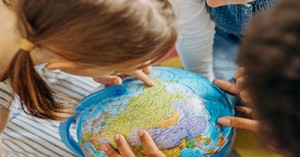
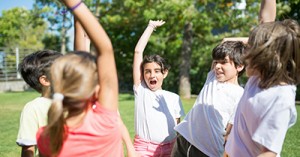
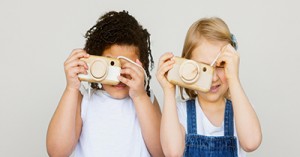
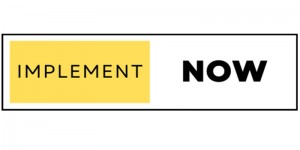
 Here is the list of the EYLF Learning Outcomes that you can use as a guide or reference for your documentation and planning. The EYLF
Here is the list of the EYLF Learning Outcomes that you can use as a guide or reference for your documentation and planning. The EYLF The EYLF is a guide which consists of Principles, Practices and 5 main Learning Outcomes along with each of their sub outcomes, based on identity,
The EYLF is a guide which consists of Principles, Practices and 5 main Learning Outcomes along with each of their sub outcomes, based on identity, This is a guide on How to Write a Learning Story. It provides information on What Is A Learning Story, Writing A Learning Story, Sample
This is a guide on How to Write a Learning Story. It provides information on What Is A Learning Story, Writing A Learning Story, Sample One of the most important types of documentation methods that educators needs to be familiar with are “observations”. Observations are crucial for all early childhood
One of the most important types of documentation methods that educators needs to be familiar with are “observations”. Observations are crucial for all early childhood To support children achieve learning outcomes from the EYLF Framework, the following list gives educators examples of how to promote children's learning in each individual
To support children achieve learning outcomes from the EYLF Framework, the following list gives educators examples of how to promote children's learning in each individual Reflective practice is learning from everyday situations and issues and concerns that arise which form part of our daily routine while working in an early
Reflective practice is learning from everyday situations and issues and concerns that arise which form part of our daily routine while working in an early Within Australia, Programming and Planning is reflected and supported by the Early Years Learning Framework. Educators within early childhood settings, use the EYLF to guide
Within Australia, Programming and Planning is reflected and supported by the Early Years Learning Framework. Educators within early childhood settings, use the EYLF to guide When observing children, it's important that we use a range of different observation methods from running records, learning stories to photographs and work samples. Using
When observing children, it's important that we use a range of different observation methods from running records, learning stories to photographs and work samples. Using This is a guide for educators on what to observe under each sub learning outcome from the EYLF Framework, when a child is engaged in
This is a guide for educators on what to observe under each sub learning outcome from the EYLF Framework, when a child is engaged in The Early Years Learning Framework describes the curriculum as “all the interactions, experiences, activities, routines and events, planned and unplanned, that occur in an environment
The Early Years Learning Framework describes the curriculum as “all the interactions, experiences, activities, routines and events, planned and unplanned, that occur in an environment

